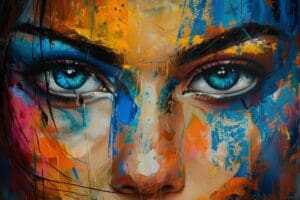How do we capture the intangible: a fleeting expression, a character that is revealed in the sparkle of an eye or an emotion that can fill a room with atmosphere? These are not things that you can touch so how can an artist paint such things? How can we achieve a richness and depth of emotion and feeling in our paintings?
Most realist artists are initially inspired by and paint the physical things around them. But often those who reach higher echelons are those who can create paintings that reach out of the frame to connect with and touch the emotions of those that view the work.
It all begins with an intelligent composition that emphasizes the nuances that give us an insight into our subject.
An example of this is an old-world atmosphere enriched by the use of a muted palette of colors. The feeling of depth and charm established by hues of this nature will capture the beauty of age and timelessness.
Good observation and knowledge of facial muscles and how they work in unison will support and bring a ‘truth’ to facial emotions such as laughing eyes, petulance, concern.
A serene background will suggest gentleness and a tranquility of personality. There are many subtleties that allow us to suggest what we want our viewers to know and feel about our subject.
The eyes, along with the mouth, will convey more to the viewer about that person than any other part of the painting. Eyes have incredible power. If you portray them well – your painting will be a triumph – even if other areas pale in success.
Glazing the blue of a cornea with several transparent layers will give you the impression of liquid pools of hue that have no end to their depth. They draw the viewer in and give credence to the quote ‘The eyes are the mirror of the soul’.
We all know how just one inadvertent flick of the brush can change the expression on the lips. Those of you who have struggled with lips will know exactly what I mean!
I put great emphasis on observation and my philosophy is to teach why and how things work – or why they don’t! This opens a whole new world of possibilities and best of all creates excitement and enthusiasm which helps us all to retain what we have learned.
Source by Susan Harrison-Tustain
Disclaimer: The views and opinions expressed in this article are those of the authors and do not necessarily reflect the official policy or position of Irish Artmart.





